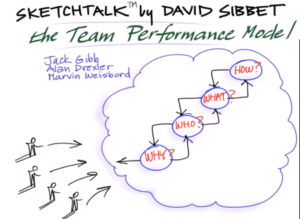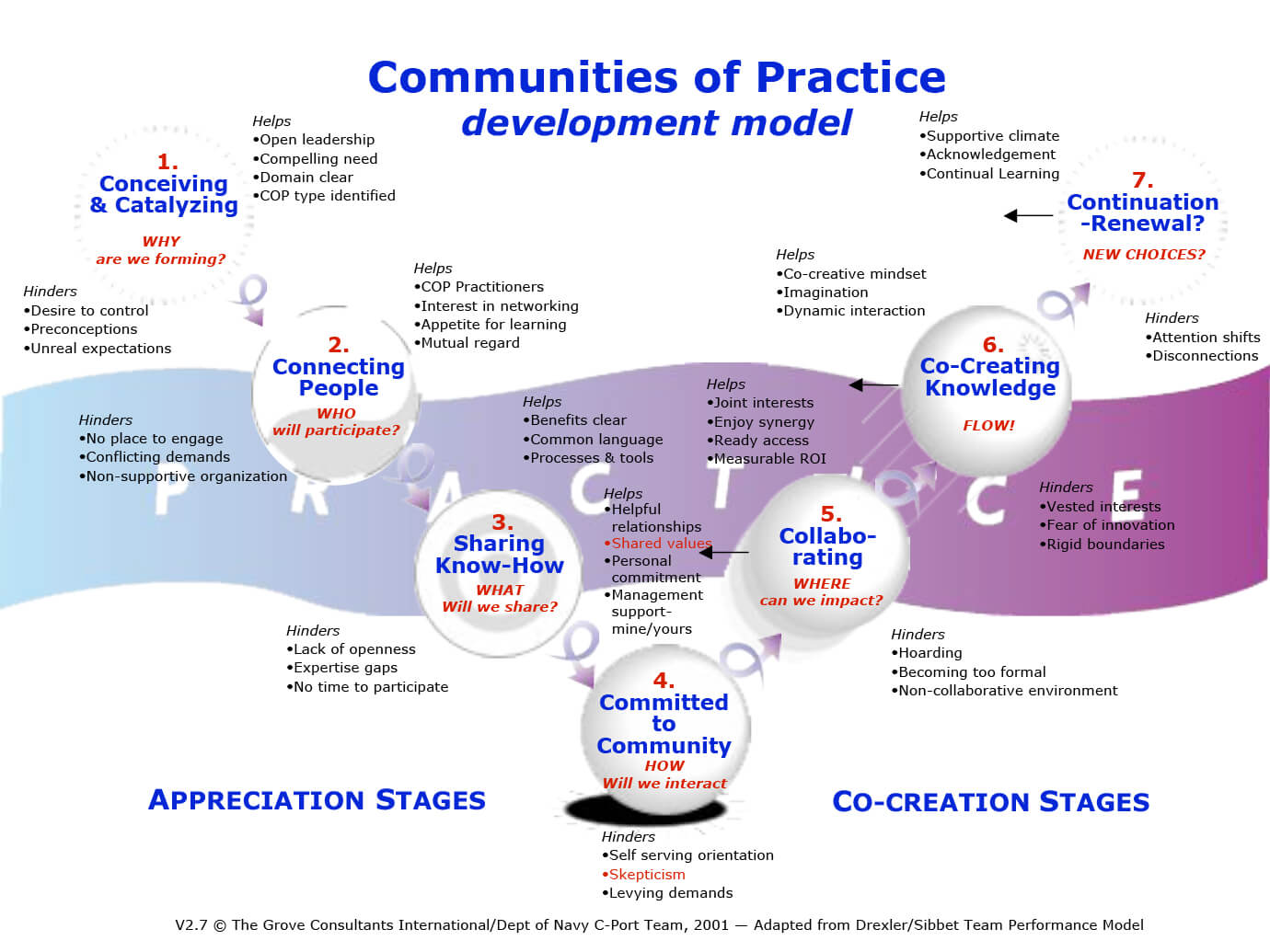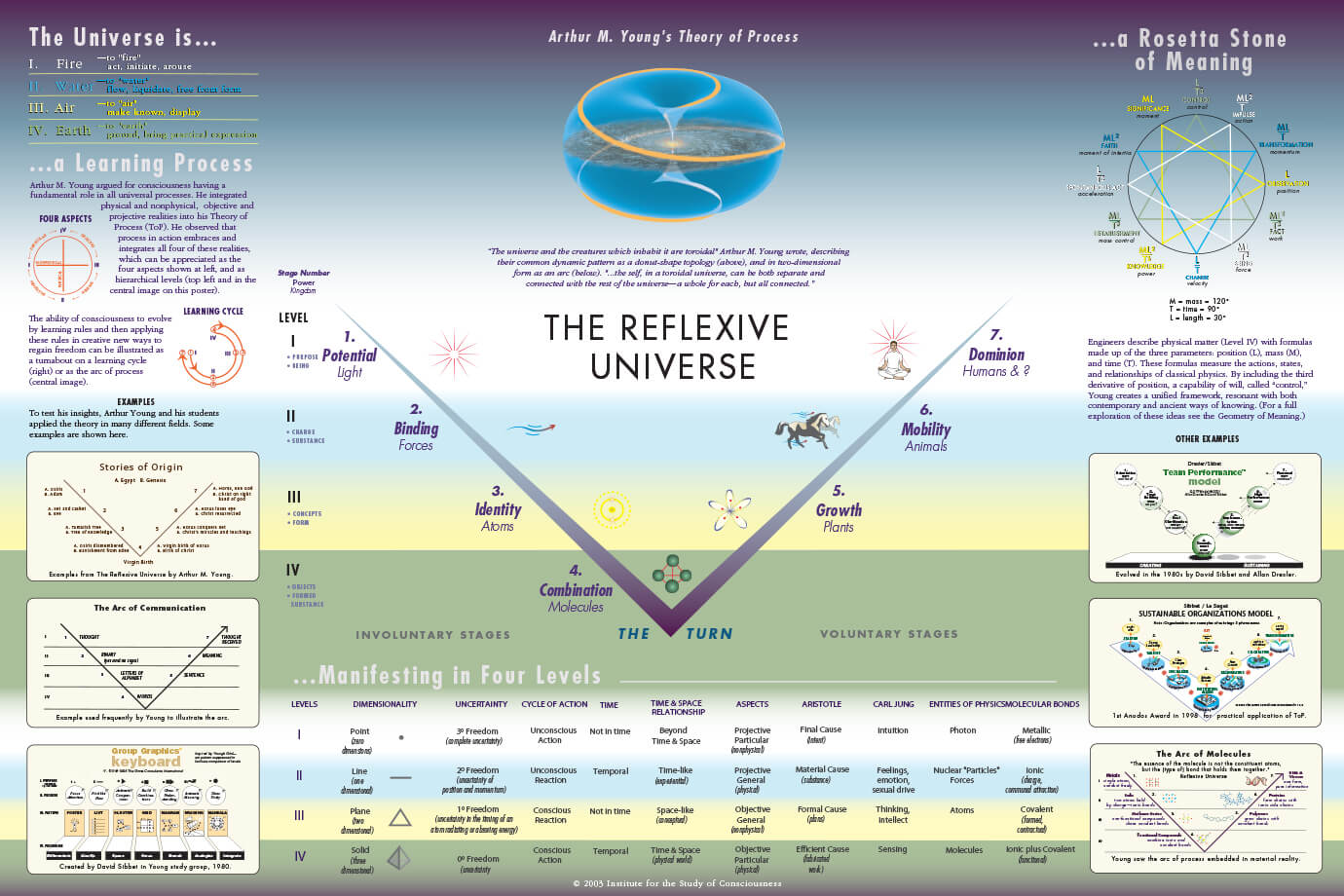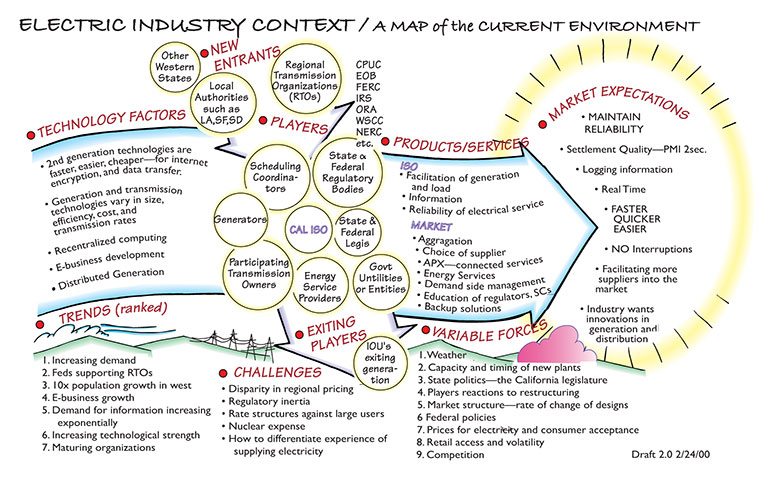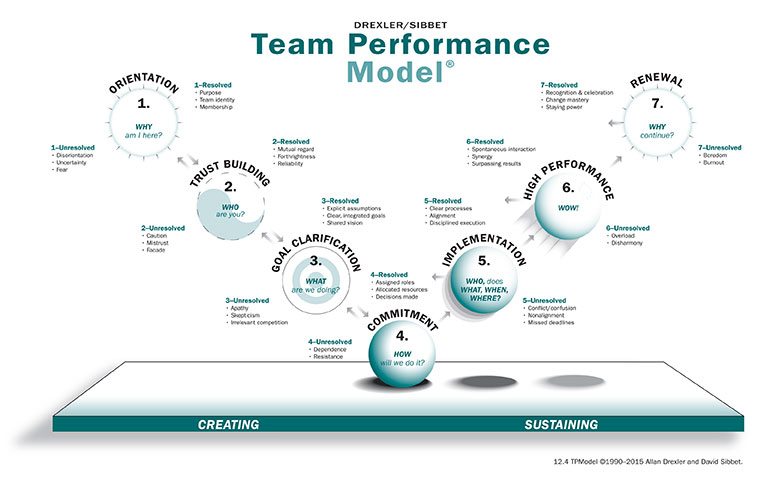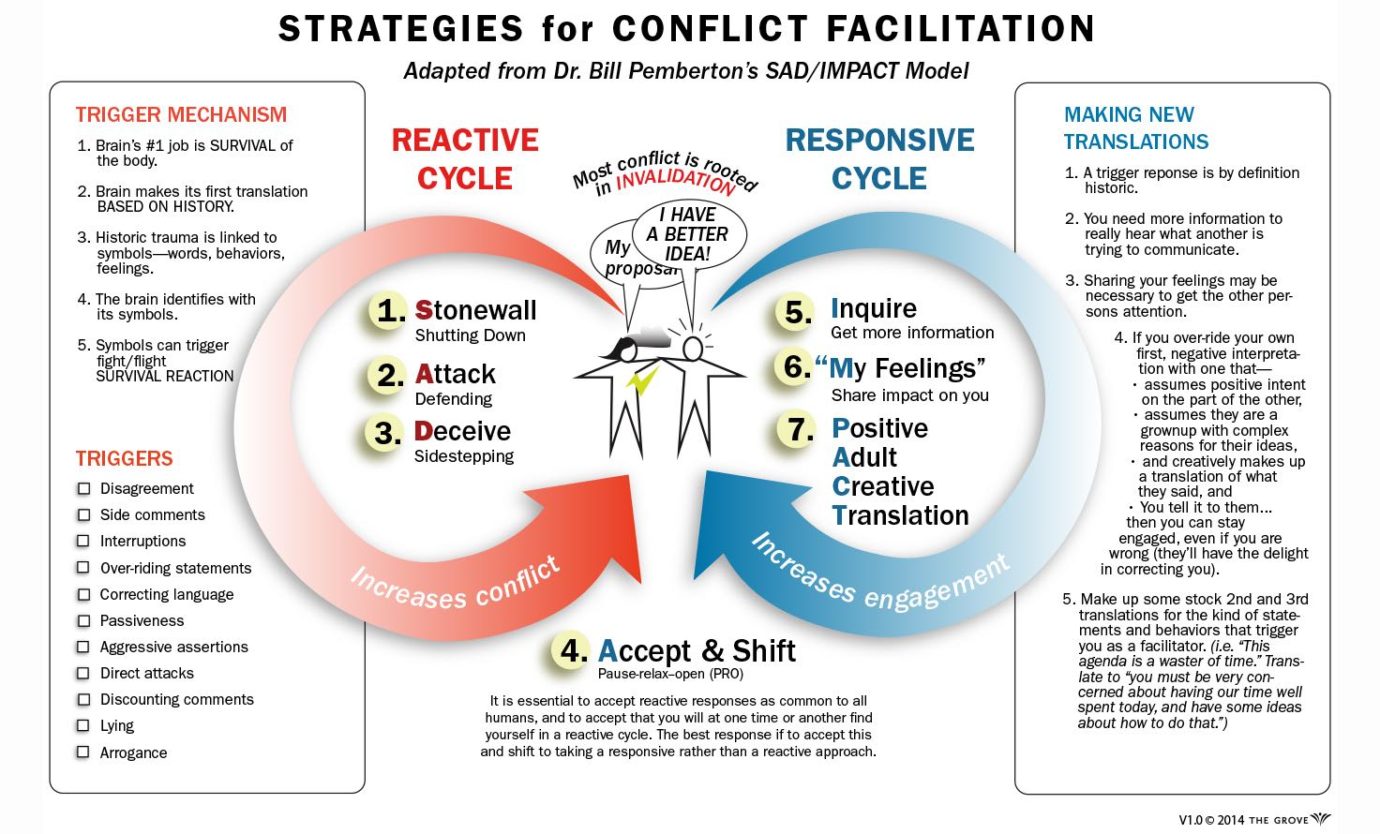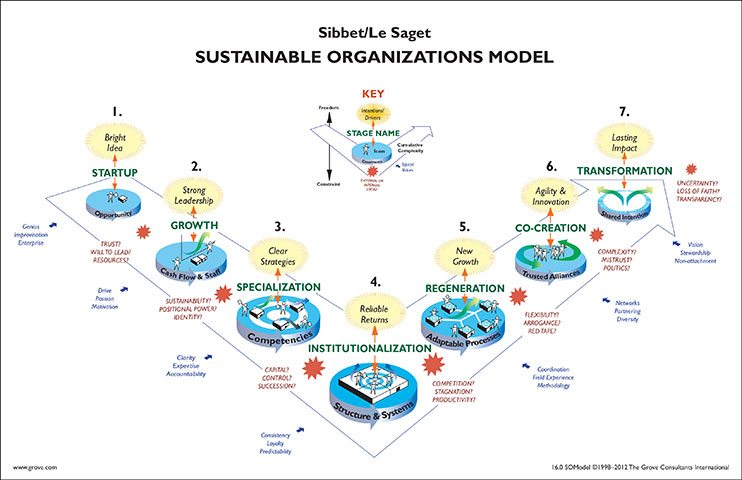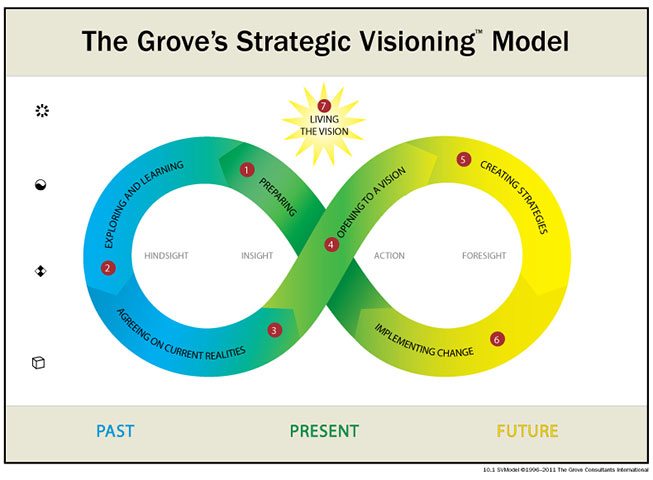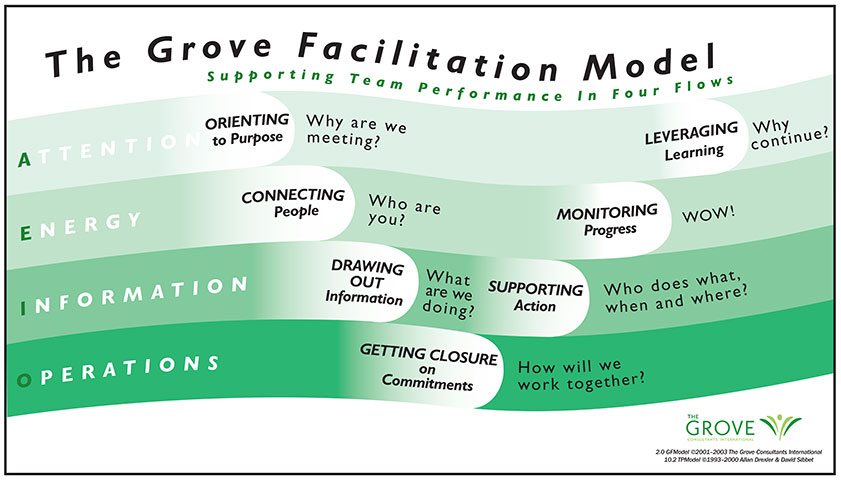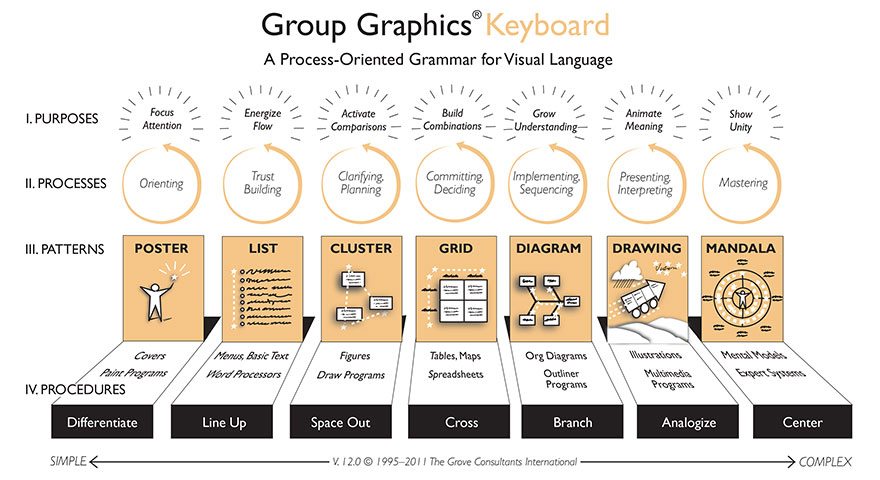Visual Consulting: Co-Creating the Future

For years I’ve had an open geodesic sphere hanging in my studio with two quotes hanging in the middle. One is by Buckminster Fuller, inventor of geodesics. To paraphrase, he says you can’t reform humans where they are (I think he said “man,” dating him). The best you can do, he continues, is to go into the outlaw area and make it so attractive that people eventually copy you.
On the opposite side of the card is this quote by W. Warren Wagar, historian: “The ultimate function of prophecy is not so much to foretell the future as to shape it.”
As Gisela Wendling and I sit midway through co-creating the fourth book in the Wiley Visual Leadership series, called Visual Consulting: Designing & Leading Change, I find these quotes even more relevant. I know that people like tools and want practical things to do in these kinds of books. But Gisela and I also care about a future that can reclaim other elements that seem to be neglected in our increasingly high tech, maximization-oriented society—such as feelings, deep listening, trusting one’s trained intuition, and having a spiritual practice that keeps us grounded in a time of growing chaos.
So we are writing about a future we hope to shape, one where the utility and excitement of visual facilitation can integrate with what practitioners are learning about the importance of dialogue, as well as with the practices emerging from a growing field of change consultants.


 I like to think of my life as a tapestry, with all the threads from people who have influenced me woven together with my own abilities and interests. One of the strongest threads is from my godfather, Dr. Robert Denton, or Dr. Bob as people in Bishop, California called him. He died October 28 at age 95. I gave this tribute at his memorial Saturday, November 18, 2017.
I like to think of my life as a tapestry, with all the threads from people who have influenced me woven together with my own abilities and interests. One of the strongest threads is from my godfather, Dr. Robert Denton, or Dr. Bob as people in Bishop, California called him. He died October 28 at age 95. I gave this tribute at his memorial Saturday, November 18, 2017.